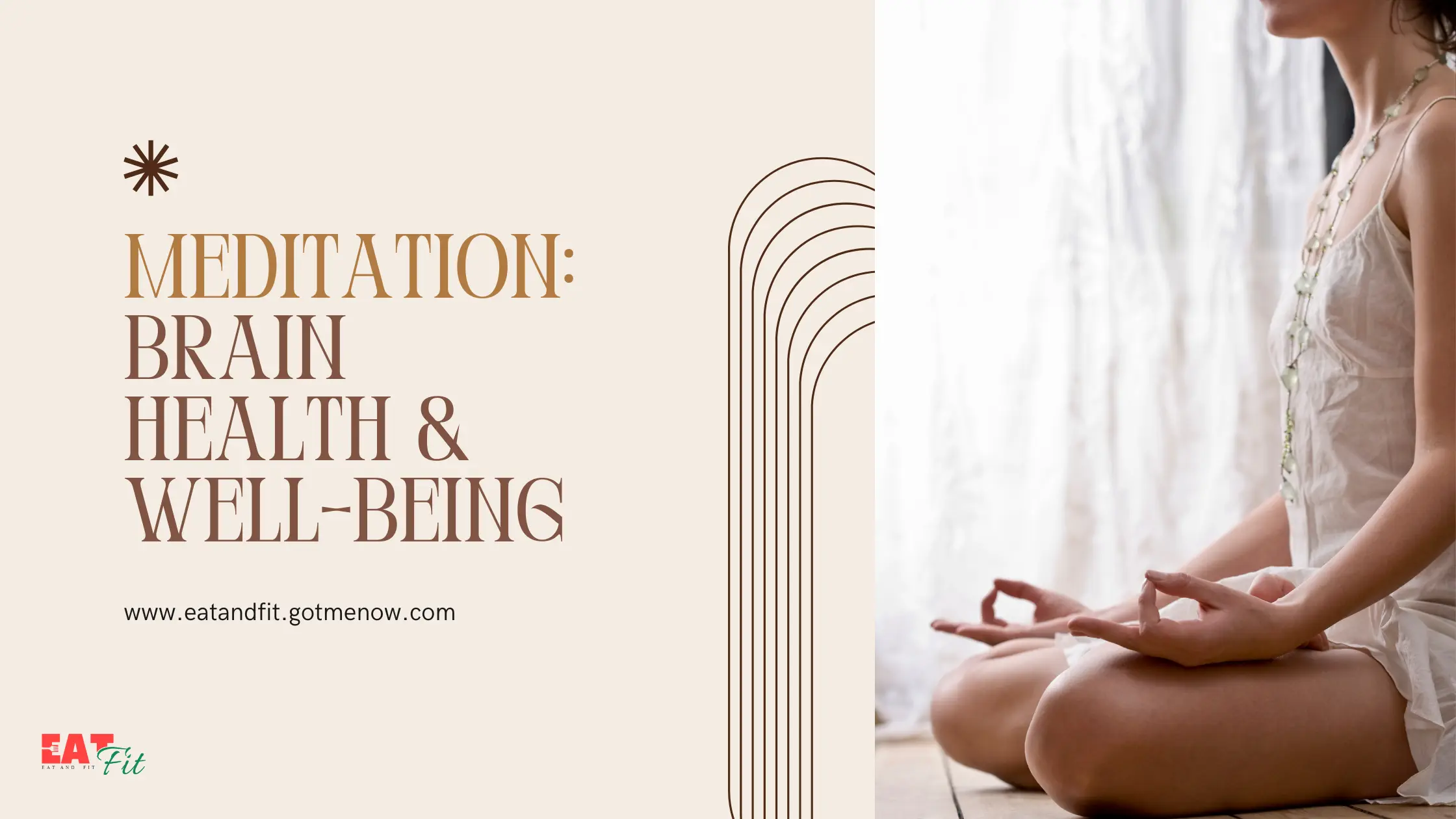- Meditation
- Mental health
- Mental Health Awareness and Coping Strategies
- Understanding and Managing Stress
The Power of Mindfulness: Enhancing Presence and Happiness

Table of Contents
- Introduction
- Understanding the Third Eye Center
- The Disorganized Nature of Thoughts and Memories
- The Importance of Mindfulness and Awareness
- The Role of Mindfulness in Personal Growth
- Conclusion
- FAQ
Introduction
The absence of sensory neurons in the brain is a fascinating concept. Unlike the rest of our body, the brain itself does not have sensory neurons. This means that we can perform brain surgery on someone without the need for anesthesia on the brain itself. While we may have emotions, there is no feeling in the brain.
When we focus our attention on the prefrontal cortex, which is a few centimeters or inches behind our forehead, something interesting happens. By directing our perception and attention to this location, we are essentially bringing our awareness to an area where there are no sensations to feel. This is why some meditative practices encourage focusing on the “Third Eye Center,” which is the prefrontal cortex.
By closing our eyes and directing our attention to the prefrontal cortex, our thoughts, feelings, and memories become more prominent in our perception. Normally, we are preoccupied with perceiving and paying attention to our external and internal sensations. But when we shift our focus to the brain, our thoughts and emotions take center stage.

During meditation, thoughts can come in waves and feel overwhelming. This is because when we focus on the brain, our thoughts become more apparent and can seem disorganized. This is not how we typically perceive things, as our attention is often split between multiple sensations and thoughts. But when we direct our perception solely to our thoughts, we realize how random and intrusive they can be.
Research has shown that most people have an interoceptive bias, meaning they are more focused on their internal experiences than what is happening externally. While it is important to have a meditation practice that allows us to focus inward, it is equally beneficial to be mindful and aware of our external environment. This includes being present to what others are saying and doing. By being mindful of both our internal and external experiences, we can enhance our sense of well-being and happiness.
Understanding the Third Eye Center
When we talk about the Third Eye Center, we are referring to the prefrontal cortex, which is located a few centimeters or inches behind our forehead. This area of the brain is often associated with our ability to focus and direct our attention. It is important to note that the brain itself does not have sensory neurons, unlike the rest of our body. This means that there are no physical sensations to feel within the brain.
By closing our eyes and directing our attention to the prefrontal cortex, we shift our focus away from external and internal sensations and bring our awareness to an area where there are no sensations. This is why the Third Eye Center is often associated with the prefrontal cortex, as it represents a shift in perception to a location without physical feelings.
The Benefits of Meditation for Brain Health and Overall Well-being
When we focus on the prefrontal cortex, our thoughts, feelings, and memories become more apparent in our perception. Normally, our attention is split between multiple sensations and thoughts, both external and internal. But when we direct our perception solely to our thoughts, they take center stage. This can be quite overwhelming, especially during meditation, as thoughts can come in waves and seem disorganized.
During meditation, thoughts may arise in a seemingly random and intrusive manner. This is because when we focus on our thoughts and emotions, they become more prominent in our awareness. We start to realize how many thoughts and memories constantly arise in our minds, which can make it challenging to simply observe them without getting caught up in their content.
It is important to find a balance between directing our attention to our internal experiences and being mindful of our external environment. Research has shown that many people have an interoceptive bias, meaning they are more focused on their internal experiences than what is happening externally. While it is valuable to have a meditation practice that allows us to focus inward, it is equally important to be present and aware of our surroundings.
By being mindful of both our internal and external experiences, we can enhance our sense of well-being and happiness. This includes being present to what others are saying and doing, as well as being aware of our immediate environment. By focusing on external sensations or engaging in activities that require our attention, we can reduce the overwhelming nature of thinking and create a sense of calm and presence in our lives.
The Disorganized Nature of Thoughts and Memories
When we focus our attention on the prefrontal cortex, our thoughts, feelings, and memories become more prominent in our perception. Normally, we are preoccupied with perceiving and paying attention to our external and internal sensations. But when we shift our focus to the brain, our thoughts and emotions take center stage.
During meditation, thoughts can come in waves and feel overwhelming. This is because when we focus on the brain, our thoughts become more apparent and can seem disorganized. This is not how we typically perceive things, as our attention is often split between multiple sensations and thoughts. But when we direct our perception solely to our thoughts, we realize how random and intrusive they can be.
Research has shown that most people have an interoceptive bias, meaning they are more focused on their internal experiences than what is happening externally. While it is important to have a meditation practice that allows us to focus inward, it is equally beneficial to be mindful and aware of our external environment. This includes being present to what others are saying and doing. By being mindful of both our internal and external experiences, we can enhance our sense of well-being and happiness.
Being in our heads and lacking presence is a common struggle for many people. We often find ourselves lost in our thoughts, disconnected from our immediate surroundings. This disorganized and wandering nature of thoughts can make it difficult to stay present and engaged in the present moment.
Previous research on happiness and interoceptive bias provides relevance to this topic. The data suggests that being mindful and aware of both our internal and external experiences can contribute to a greater sense of well-being and happiness. By focusing on our thoughts and emotions, we can better understand their random and intrusive nature, allowing us to observe them without getting caught up in their content.
It is important to find a balance between directing our attention to our internal experiences and being mindful of our external environment. By being present and aware of our surroundings, we can reduce the overwhelming nature of thinking and create a sense of calm and presence in our lives.
The Importance of Mindfulness and Awareness
Understanding the impact of stressors and demands of life:
Life can be filled with stressors and demands that can often leave us feeling overwhelmed and disconnected. From work responsibilities to personal relationships, it can be challenging to find a sense of balance and peace. By acknowledging and understanding the impact of these stressors on our well-being, we can begin to take steps towards finding relief and restoring our sense of calm.
My Journey with Meditation: Overcoming Anxiety and Awakening
The need for mindfulness to counterbalance stress:
Mindfulness offers a powerful tool for counterbalancing the stress and demands of life. By practicing mindfulness, we can cultivate a greater awareness of the present moment and develop a nonjudgmental attitude towards our thoughts and emotions. This allows us to approach stressors with a sense of clarity and calm, rather than becoming overwhelmed by them.
Enhancing presence and happiness through mindfulness:
Mindfulness has the ability to enhance our presence and happiness in profound ways. By bringing our attention to the present moment, we can fully engage with our surroundings and the people in our lives. This allows us to savor the simple pleasures and find joy in the everyday moments that often go unnoticed.
The connection between awareness and well-being:
Research has shown a strong connection between awareness and well-being. By developing a greater awareness of our thoughts, emotions, and external environment, we can better understand ourselves and the world around us. This heightened awareness can lead to a greater sense of fulfillment, purpose, and overall well-being.

The benefits of being mindful of external factors:
While it is important to cultivate mindfulness of our internal experiences, it is equally important to be mindful of external factors. By being present and aware of our surroundings, we can deepen our connections with others, improve our communication skills, and enhance our overall quality of life. Being mindful of external factors also allows us to respond to challenges and conflicts with greater compassion and understanding.
The Role of Mindfulness in Personal Growth
Expanding mindfulness beyond self-reflection:
Mindfulness is often associated with self-reflection and focusing inward. However, it has the potential to go beyond that. By expanding our mindfulness practice to include our immediate environment, we can cultivate a deeper sense of connection and awareness.
Being aware of one’s immediate environment:
When we practice mindfulness, it is important to be fully present in our surroundings. This means paying attention to the sights, sounds, and sensations that are happening in the present moment. By being aware of our immediate environment, we can engage more fully with the world around us.
The impact of other people’s actions and words:
Being mindful also involves being aware of how other people’s actions and words impact us. By paying attention to the impact that others have on us, we can better understand our own reactions and responses. This awareness allows us to cultivate more compassionate and empathetic relationships with others.
Enhancing well-being by being present with others:
One of the benefits of mindfulness is its ability to enhance our well-being. By being fully present with others, we can deepen our connections and create meaningful relationships. By listening attentively and engaging with others in a mindful way, we can foster a sense of belonging and happiness.
The potential of mindfulness for personal growth:
Mindfulness has the potential to catalyze personal growth and transformation. By being present and aware of our internal and external experiences, we can gain insights about ourselves and the world around us. This self-awareness can lead to personal growth, enhanced self-compassion, and a deeper understanding of our values and goals.
Conclusion
Mindfulness is a powerful practice that can greatly enhance our sense of presence and happiness. By directing our attention to the prefrontal cortex, also known as the Third Eye Center, we can bring awareness to an area where there are no physical sensations. This shift in perception allows our thoughts, feelings, and memories to take center stage.
While meditation can sometimes feel overwhelming as thoughts come in waves, it is important to find a balance between focusing inward and being mindful of our external environment. Research shows that many people have an interoceptive bias, meaning they are more focused on their internal experiences than what is happening externally. By cultivating mindfulness of both internal and external experiences, we can enhance our well-being and happiness.
Being mindful of our surroundings and the people around us allows us to deepen our connections, improve our communication skills, and find joy in the simple pleasures of life. By observing our thoughts and emotions without getting caught up in their content, we can better understand ourselves and the world around us.
Practicing mindfulness also plays a vital role in personal growth and transformation. By expanding our mindfulness practice to include our immediate environment, we can cultivate a deeper sense of connection and awareness. This includes being fully present in our surroundings, paying attention to the impact of other people’s actions and words, and engaging with others in a mindful way.
Overall, mindfulness offers a powerful tool for counterbalancing the stress and demands of life. It allows us to cultivate a greater awareness of the present moment and develop a nonjudgmental attitude towards our thoughts and emotions. By being mindful of both our internal and external experiences, we can enhance our sense of well-being, find peace in the midst of chaos, and continue on a path of personal growth and self-discovery.
I encourage you to explore mindfulness practices and find what works best for you. Whether it’s meditation, mindful breathing, or simply taking a few moments each day to be fully present, incorporating mindfulness into your daily life can have a profound impact on your overall happiness and well-being. Embrace the power of mindfulness and cultivate a life filled with presence, awareness, and personal growth.
FAQ
What are sensory neurons?
Sensory neurons are specialized nerve cells that transmit information from sensory organs to the central nervous system. They allow us to perceive and interpret external and internal stimuli, such as touch, sight, sound, and temperature.
Why don’t we have sensory neurons in the brain?
The brain tissue itself does not have sensory neurons. Unlike the rest of our body, the brain does not have physical sensations. This is why brain surgery can be performed without the need for anesthesia on the brain itself.
Can brain surgery be performed without anesthetic?
Yes, brain surgery can be performed without anesthesia on the brain tissue itself. Anesthesia may be used for the incision site, but the brain does not have physical sensations, so it does not require anesthesia during surgery.
What is the Third Eye Center and its connection to the prefrontal cortex?
The Third Eye Center refers to the prefrontal cortex, which is located a few centimeters or inches behind our forehead. This area of the brain is associated with our ability to focus and direct attention. By directing our attention to the prefrontal cortex, we bring awareness to a location where there are no physical sensations.
How can mindfulness enhance presence and happiness?
Mindfulness can enhance presence and happiness by cultivating a greater awareness of the present moment. By focusing on our thoughts and emotions, we can observe them without getting caught up in their content. By being mindful of both our internal and external experiences, we can reduce the overwhelming nature of thinking and enhance our overall sense of well-being.









